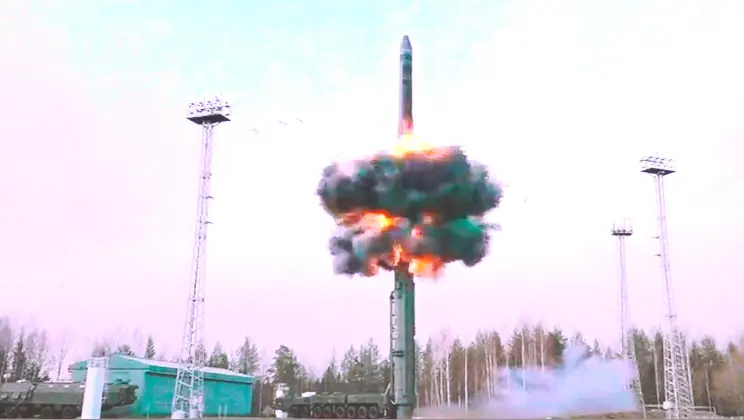<p >The Russian Armed Forces have launched the first intercontinental range ballistic missile strike in history, according a report by the Ukrainian Armed Forces Strategic Command, with six independently retargetable warheads from a single missile used against industrial targets in Dnipro, Ukraine. Each of the six warheads in turn reportedly deployed several submunitions. Dnipro is home to the Pivdenmash missile production facility, which has been speculated to be among the targets. The fitting of ICBMs with non-nuclear warheads is a relatively novel innovation, and one which the United States Navy has considered under the <a href=" target="_blank">Prompt Global Strike</a> program. The ranges across which such missiles travel, and the high costs needed to accommodate these, mean that using them to deliver conventional attacks has not been considered cost effective in the past. Significant increases to the precision which can be achieved at such ranges, however, has made conventional attacks using ICBMs increasingly viable. The Russian strike has the potential to set a precedent for other states with ICBMs in their arsenals to increasingly consider options for using them for conventional attacks.&nbsp;</p><p ><img src=" title="RS-26 Missile Test Launch"></p><p >A number of Western sources have notably disputed claims that an ICBM was used, asserting that the strike was instead launched using an RS-26 missile which Western governments have long classified as an intermediate range ballistic missile. The RS-26’s range notably depends on its warhead, with an intercontinental range achievable if fitted with a single warhead, although the range falls below the 5000 kilometre threshold if using a full payload of six warheads. Work on the missile’s development was reported to have ceased in 2017, in part due to concerns that an intermediate range ballistic missile would violate the Intermediate Range Nuclear Forces treaty between Russia and United States. Washington’s withdrawal from the treaty in 2019, however, would make resumed work legal if confirmed. The use of the new missile to launch a fundamentally new kind of attack on Ukrainian targets is likely to have been done in order to retaliate for joint strikes by Ukraine and its Western allies using U.S. and British ATACMs and Storm Shadow missiles respectively against Internationally recognised Russian territory, which <a href=" >first occurred</a> on November 19 and has been considered an unprecedented escalation.&nbsp;</p>
Russia Launches World’s First Ever ICBM Attack Targeting Ukraine: A New Role For the World’s Longest Ranged Weapons

